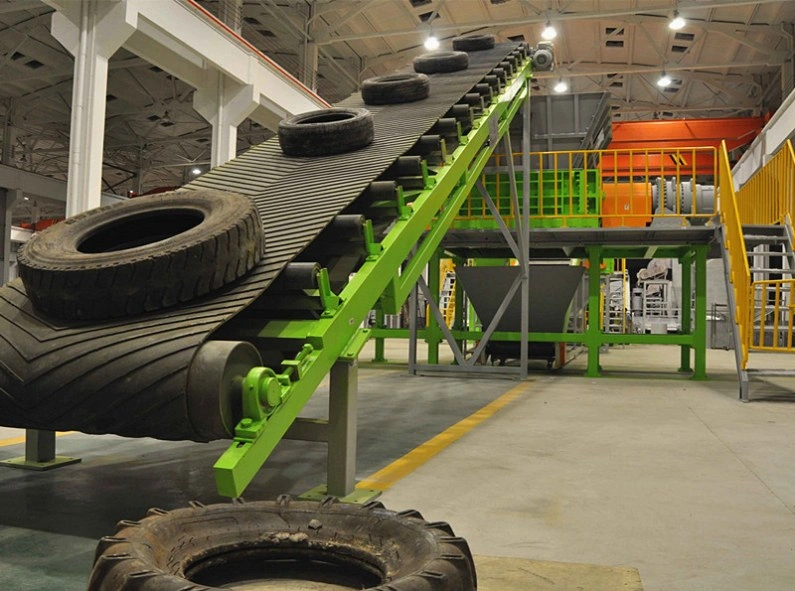Have you ever wondered how nylon fiber is separated from waste tires during the recycling process? Nylon fiber, used to reinforce tires, must be removed to produce high-quality recycled rubber. This process requires specialized tire recycling equipment and precise techniques. Let's explore how it's done.
1. Why Separate Nylon Fiber?
Nylon fiber is a key component in tire construction, providing strength and durability. However, during recycling, it must be separated from the rubber to ensure the recycled material is pure and suitable for reuse. Removing nylon fiber also allows it to be recycled separately, reducing waste and maximizing resource efficiency.
2. Key Equipment for Nylon Fiber Separation
Tire Shredder: The process begins with a tire shredder, which cuts whole tires into smaller pieces (typically 50-100mm). However, this size is still too large for effective fiber separation.
Granulator: To achieve the required size for fiber extraction, the shredded tire pieces are further processed by a granulator. This machine reduces the rubber pieces to 4mm or smaller, ensuring the nylon fibers are exposed and ready for separation.
Fiber Removal Machine: Once the rubber is granulated, a fiber removal machine is used to separate the nylon fibers from the rubber. This machine uses a combination of mechanical and air separation techniques to isolate the fibers.
Magnetic Separator: During the process, steel wires are also separated using a magnetic separator. The steel wires are typically reduced to 20mm or smaller for efficient extraction.
Air Separator: Finally, an air separator uses airflow to separate lightweight nylon fibers from the rubber particles. This ensures a clean separation and high-quality recycled rubber.
3. The Separation Process
Shredding: Waste tires are fed into a tire shredder, which cuts them into small pieces (50-100mm). This is the first step in the tire recycling process.
Granulation: The shredded tire pieces are then processed by a granulator, which reduces the rubber to 4mm or smaller. This step is crucial for exposing the nylon fibers and preparing the material for separation.
Fiber Removal: The granulated rubber is passed through a fiber removal machine, which mechanically separates the nylon fibers from the rubber.
Steel Wire Extraction: A magnetic separator is used to extract steel wires, which are reduced to 20mm or smaller during the process.
Air Separation: The mixture of rubber and fibers is then processed by an air separator, which uses airflow to isolate the lightweight nylon fibers from the rubber particles.
Collection: The separated nylon fibers and steel wires are collected for recycling, while the rubber is processed further for reuse.
4. Benefits of Nylon Fiber Separation
Improved Rubber Quality: Removing nylon fibers ensures that the recycled rubber is pure and suitable for high-quality applications.
Resource Efficiency: Separating and recycling nylon fibers and steel wires reduces waste and maximizes the value of recycled materials.
Environmental Impact: By recycling both rubber and nylon fibers, this process helps reduce landfill waste and conserve natural resources.
Conclusion
Separating nylon fiber from waste tires is a crucial step in the tire recycling process. With the right equipment, like a tire shredder, granulator, fiber removal machine, and air separator, you can efficiently isolate nylon fibers and produce high-quality recycled rubber. Contact us today to learn more about our tire recycling solutions!

